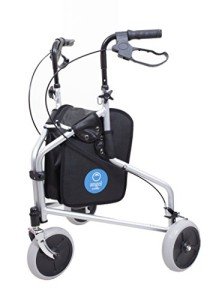As the population ages, the need for mobility aids like rollator walkers has risen. These walkers supply stability, assistance, and freedom of motion for individuals dealing with mobility concerns, be they temporary or persistent. Understanding the kinds of rollator walkers readily available, their benefits, features, and how to pick the best one can considerably enhance the lifestyle for both the user and their caretakers.
A rollator walker is a mobility aid developed to assist people maintain their independence while walking. It features a frame with 4 wheels, hand brakes, and a seat, making it ideal for users needing additional assistance without the complete constraints of traditional walkers.
Rollator walkers come geared up with different functions developed to enhance user experience. Here are a few of the most typical features:

Rollator walkers provide various advantages. They can significantly improve mobility and safety for users. Here are some key benefits:
Rollator walkers can be found in various styles and variations to fulfill private needs. Here are a few common types:
| Type | Description |
|---|---|
| Standard Rollator | Fundamental four-wheeled design created for indoor and outdoor use. |
| Junior Rollator | A smaller version customized for shorter people or children. |
| Heavy-Duty Rollator | Constructed to accommodate bigger body weights and supply extra stability. |
| Three-Wheel Rollator | Compact style ideal for navigating tight spaces. |
| Rollator with Seat | Features an integrated seat for resting throughout use. |
| Rollator with Storage | Includes removable baskets or pouches for simple transport of individual items. |
Choosing the best rollator walker includes thinking about user requirements, preferences, and physical requirements. Here are some factors to consider:

Appropriate upkeep can boost the life-span of a rollator walker. Here are some ideas for keeping it in excellent condition:
Q1: What is the typical weight limitation for a rollator walker?A: Most standard rollator walkers support weights in between 250 to 300 pounds, while durable designs can accommodate as much as 500 pounds. Q2: Can rollator walkers be used outdoors?A: Yes, numerous rollatorsare designed for outdoor use. Those with to 5 years on the frame and parts, ensuring toughness and user fulfillment. Q4: How do I effectively adjust a rollator walker?A: Adjust the handles to a height that permits the user to stand upright with elbows slightly bent when holding the handles. Q5: Can after injuries or surgeries. Rollator walkers walkers, users can make informed choices that best suit their way of life and needs. Whether recovering from an injury or handling a long-lasting condition, a rollator walker can make a substantial difference in the lifestyle, enabling people to restore their liberty and confidence while moving about the world.
bigger wheels and robust frames are especially fit for uneven surface areas. Q3: Do rollator walkers feature warranties?A: Many makers offer service warranties ranging from 1
I use a rollator walker for rehabilitation?A: Yes, rollators are often used in rehabilitation settings to improve walking confidence and mobility
are important tools that offer boosted mobility and independence for lots of individuals. By understanding the types, benefits, and correct usage of rollator
No Data Found!

